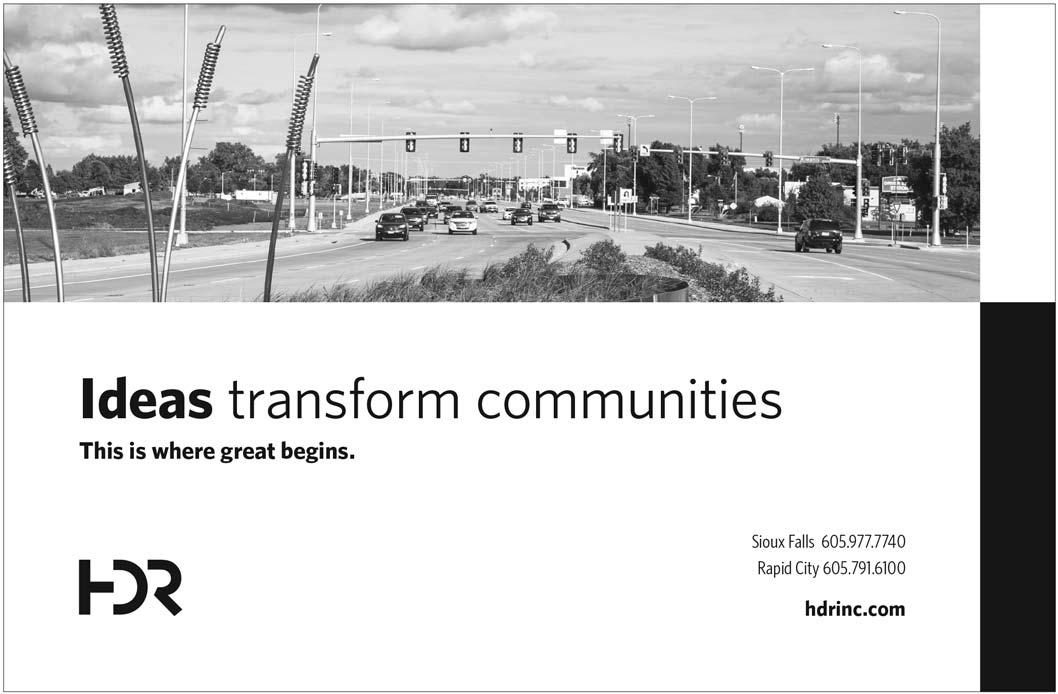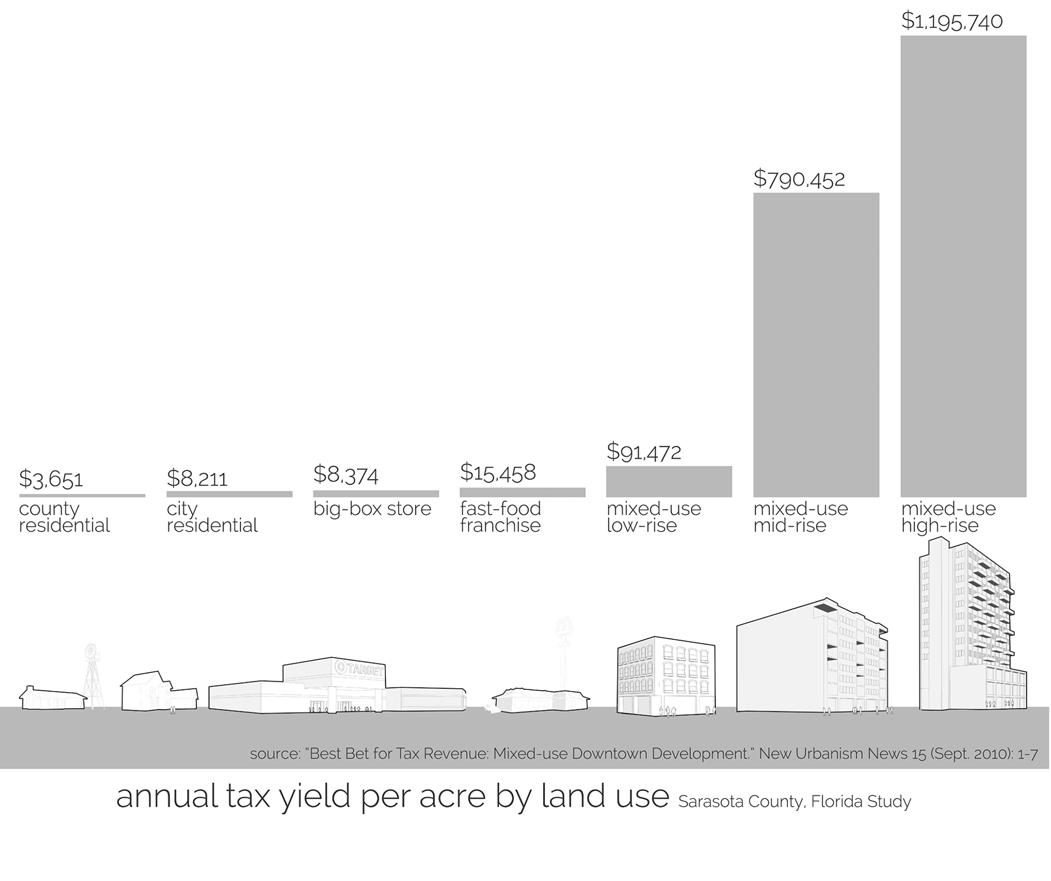
8 minute read
The Strong Town Movement: Addressing the Collapse in Infrastructure Funding
By Stephen Luoni and Matthew Petty
After an era of unprecedented development, why can’t our cities and state agencies afford to maintain our infrastructure? The Arkansas Highway and Transportation Department tells us they can only meet 18 percent of the state’s highway needs over the next 10 years, forcing them to devolve maintenance of entire road systems to counties and cities. Chuck Marohn, founder of the Minnesota-based nonprofit Strong Towns, has formulated the most perceptive analysis of this dilemma now impacting many states and cities. Marohn argues that the first generation of suburban highway construction (the interstate system of the 1950s and 1960s) was funded through savings and investment, but an even larger second generation of highway construction – and the maintenance obligations for both generations – are debt-financed. The assumption was that future growth will lead to rich returns, which has not been the case. Neither the federal government, states or developers have the capital to develop new infrastructure, nor do cities have funding to maintain existing investments. Marohn’s solution: Develop better urban land use mixes that have a proven track record of sustained wealth creation. Good town form is a big part of the solution, not more roads.
Advertisement
We have the whole infrastructure equation backwards. Municipal leaders are consistently encouraged to leapfrog the market with new infrastructure. It is first assumed that growth is inevitable, and second that growth will pay back the city for its investments. Both assumptions are wrong. Despite a never-before-seen rate of growth for more than half a century, we can’t even maintain what we have already built. It’s time to try something different.
How to Grow a City
This predicament is a direct result of our contemporary approach to infrastructure investment. Most public sector projects are debt-financed, and for that matter so are many corporate and individual investments like a home and a college education. Debt makes sense when it leads to subsequent wealth creation, a multiple return on investment.
As Marohn argues, the second generation of infrastructural investment has not only failed to create wealth, but it is leading to unmanageable debt that threatens the future solvency of many cities. Unfortunately, some local governments do not conduct the proper cost benefit analysis to know if they are fair-costing their planning decisions.

Let’s illustrate this with a scenario. Imagine you are in charge of a growing city. A land owner on the edge of town (it’s always easiest there) wants to build 100 new homes and some retail space on the old highway. You will need to widen the highway and extend the water and sewer lines to the project’s boundary, while the land owner will build the neighborhood infrastructure – the sewers, water mains and streets, which are then transferred to city control. You know your local congressional representative can help you get federal funding to expand the old highway, so your city can get major infrastructure and a new subdivision for pennies on the dollar.
Courtesy: The University of Arkansas Community Design Center
Contemporary wisdom says you would be a fool to walk away from this deal, and chances are this has been the standard deal in your city for 50 years. Here’s the catch: Unless the new subdivision generates enough tax revenue to maintain all that infrastructure, your city won’t be able to afford the maintenance. You suspect there are other ways to grow your city, but they probably won’t come with virtually free infrastructure. What do you do?
As the city’s leader, it is your responsibility to assess the risks and costs of each decision and make an informed choice on behalf of your citizens. Almost every city takes the deal, believing that the deal can’t be bad because the up-front costs are so low. Most cities don’t even count the anticipated revenue from the proposed development. Tax collections from a typical subdivision don’t cover the ongoing maintenance expenses of the attendant water and sewer lines, lighting and roadways (65- to 85-percent of costs). Also, the required overhauls aren’t included in
analyses because they don’t come due for 20 to 30 years. The only way to pay for those obligations is short-term revenue from additional development. If cities make only one change in response to current budget challenges, it is this: do the math. Count the costs (including the maintenance) and count the revenue.
Astute readers may be thinking, “But aren’t Arkansas cities funded primarily from sales tax dollars?” Yes, they are, and in theory the residents moving into new subdivisions mean more sales tax collections, which should fund the maintenance. Yet this expectation has not been born out, as evidenced by the long list of unfunded and deferred projects. No city can survive for long when it loses money on 90 percent of its development – residential land uses – and tries to make it all up on the remaining 10 percent – commercial uses.
Strong Town Form for Sustained Wealth Creation
Marohn contends that current patterns of development destroy wealth. Consider the average contemporary subdivision, which has approximately 30 homes per mile of street. Resurfacing that mile of street is an essential civic service, but it’s only a service for 30 households. On the other hand, resurfacing a mile of street in a neighborhood with a traditional compact town form has the same costs but typically serves non-residential land uses in addition to more than 100 households. The same comparison holds true for each mile of sewer or water pipe, or any other hard infrastructure the city provides. Traditional development delivers more for the same investment.
This traditional model of city growth stands in stark contrast with contemporary development because the strong town model is incremental and successional. Whereas lowdensity suburban development leapfrogs undeveloped property with low rates of return on infrastructure investments, towns built infrastructure incrementally out from a central zone of commerce. Growth was incrementally financed in modules of continuous blocks and parcels, and wealth was accretive and distributed among numerous local actors. The precise mix of residential, office, retail and other uses is subject to market forces, but the general condition is these land uses occur in both horizontal and vertical proximity to one another.
The downtown, too, was replaced incrementally with taller, more durable buildings, reflecting the community’s measured process of wealth accretion over time. Successive stages in a town’s maturation were based on

infill and value-added investments without a ballooning expansion in infrastructure. Recall that even New York and London began as a collection of villages. On the other hand, today’s uneven land speculation forces development to over-scale projects and capture a disproportionate share of the market’s demand for space, delaying otherwise feasible incremental development. You’ve seen it for yourself in Arkansas downtowns characterized by an isolated tower or two amid numerous vacant lots standing out like so many missing teeth. Incremental and successional growth processes foster the emergence of social and economic complexity where cities pay less for new growth with greater co-benefits.
Doing the Cost-Benefit Analysis
It’s the fair analysis of options that shows the economic superiority of traditional town growth. Let’s compare two real pieces of property, both in any given city or town. One is a successful big box department store; the other is a mixed-use, two-story building. The department store is relatively new construction, and the other is a remnant of the city’s past, perhaps run down. If only the total revenue is examined, the big box brings in more property and sales taxes. But if a standard measure is used –revenue per acre – the conclusion is much different because it factors municipal resources. Let’s do the math, using assessor’s data, corporate filing statements and business registry records.
First, count tax revenue. The big box brings in about $55,000 in combined sales and property taxes per acre. The smaller, mixed-use building? More than $80,000 per acre in property taxes alone. It’s not even necessary to count the sales taxes from the included bar, bodega and event venue to determine the winner. Next, count jobs. There are 12 employees per acre at the big box, and twice that in the mixed-use building. Now, count residents. The downtown building has about 35 residents per acre. The big box? Zero. Finally, count maintenance costs. When it comes to municipal expenses, the downtown building requires maintenance of about 100 feet of water lines, sewer pipe, sidewalk and pavement. The big box requires maintenance of more than 1,500 feet of the same, spreading out the required coverage area for safety services. Moreover, the big box retailer chose the site because the city and state highway department had built a new five lane arterial roadway. It was built under the assumption it would develop as a strong commercial corridor – after all, the corridor would be anchored by the big box. Today, the corridor is mostly empty and it is already scheduled for major maintenance. It was a speculative bet that didn’t pay off in time. Now, it costs the city far more than it generates.
It Was Just an Experiment
It’s the same story across the state. Since the 1950s, many cities have developed land at a rate as much as three times faster than their population growth. No other statistic illustrates the speculative nature of premature investment so well. The correct infrastructure investment will build prosperity. Marohn reminds us that, “roads move people between places while streets provide a framework for capturing value within a place.”
Instead of lamenting our looming budget crises, let’s reframe the recent past as an experiment. It was an experiment worth conducting, but now it is clear that speculative infrastructure is a failed fiscal model. For literally thousands of years, humans built prosperous communities incrementally, and it is time to return to that approach. Changing course may not be simple, but if leaders are willing to make a fair comparison of all their options, our cities will succeed again.
Reprinted with permission from the Arkansas Times.











